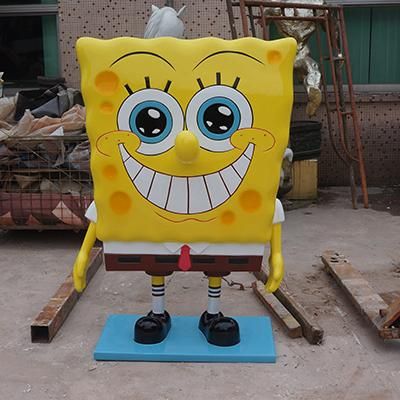With the properties of glass-like hardness, high temperature resistance, corrosion resistance, and as hard and unbreakable as steel, the fiberglass materials are very popular sculpture product in recent years. Here we will share the detailed production process as followings.
Fiberglass sculptures can be divided into two types, which are namely round sculpture and relief sculpture. They can also be divided the figure or celebrity sculpture, Animal Sculpture, cartoon sculpture, mall beauty and decoration sculpture, campus relief, urban sculpture, European architectural sculpture, abstract art, figurine sculpture and so on. Their specific production processes are different, while as long as master the key techniques, you can make an exquisite and unique Fiberglass sculpture with the following three steps.

The first step—clay sculpture production
1. Based on the basic design drawing and production requirements of the finished product, produce the supporting frame and shape in advance.
2. Fill with clay. Applying different methods based on different sculpture styles.
3. fine carving and finishing

The second step-make molds
1. First of all, artists will treat the clay surface considering and choosing from various factors.
2. make molds according to customer requirements, such as silicone mold, plaster mold, or fiberglass mold. Each of the molds has advantages and disadvantages. The silicone mold is cost-high with the finished product of best effect. Glass and steel die can also be used frequently with good finished effects. Plaster molds are disposable and inexpensive.
3. When making molds, artists need to divide the molds into more than two pieces according to the shape of the product aiming to not break the mold, easy to install and integrate.
The third step-finish the sculpture
1. The manufacture of Fiberglass sculpture are hand paste molding. A number of unit dies were mold respectively.
2. Integrating, also known as assembly. After the unit products formed, they are combined into a whole.

